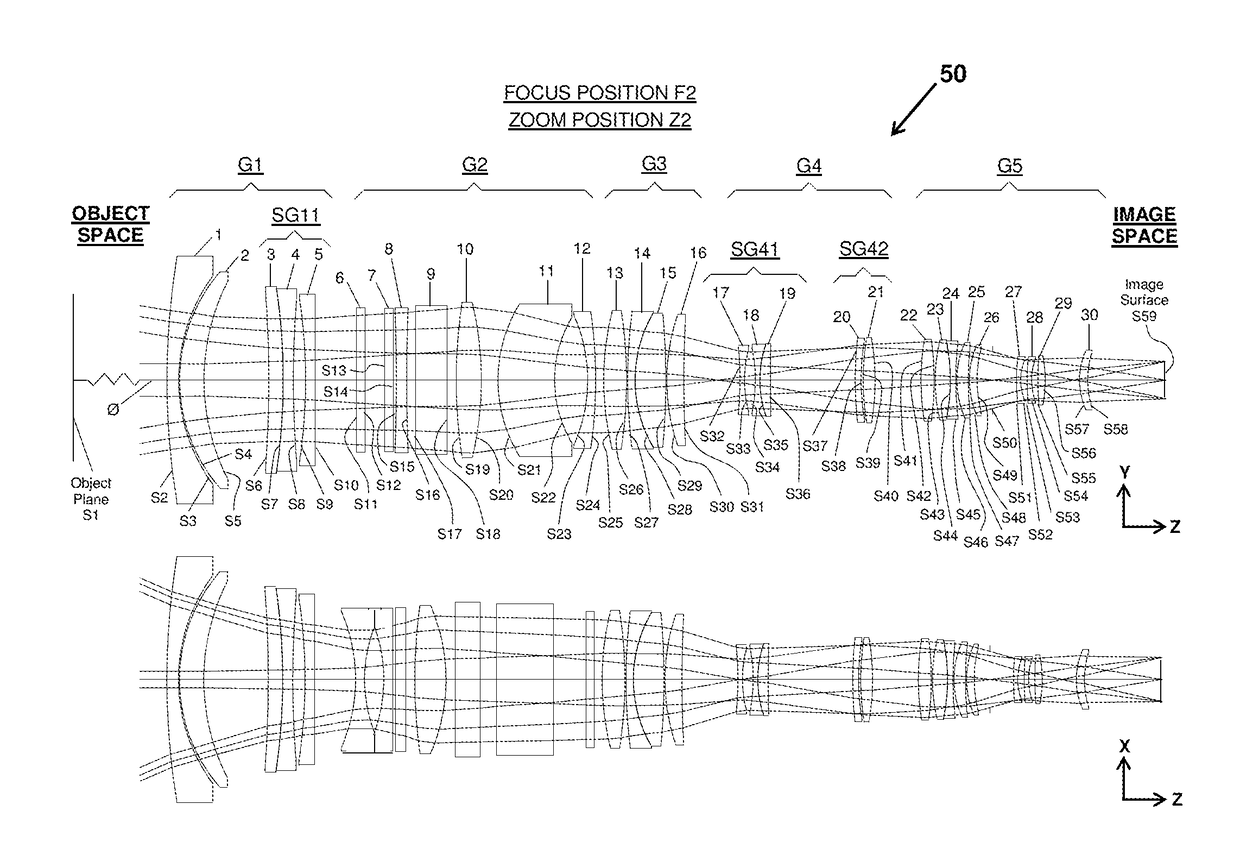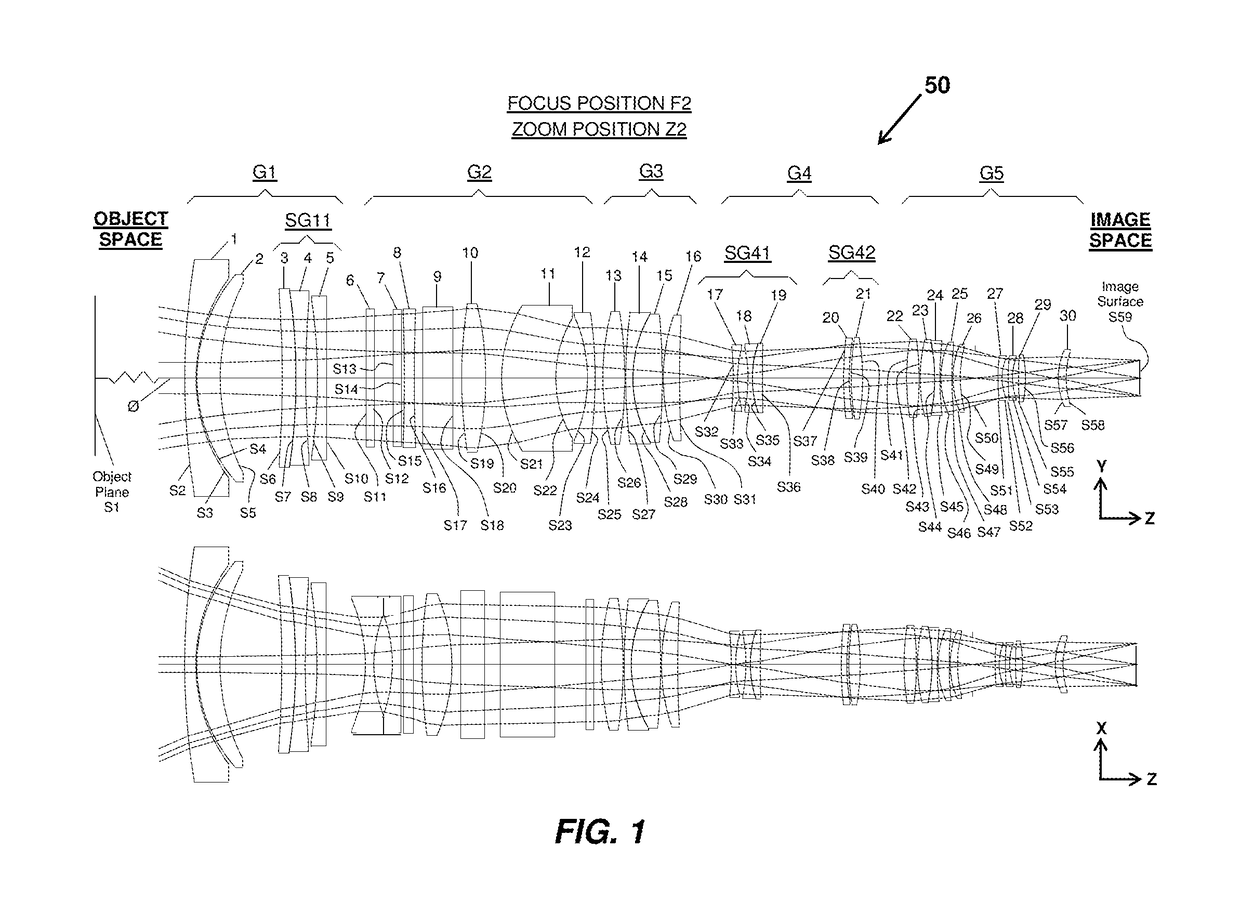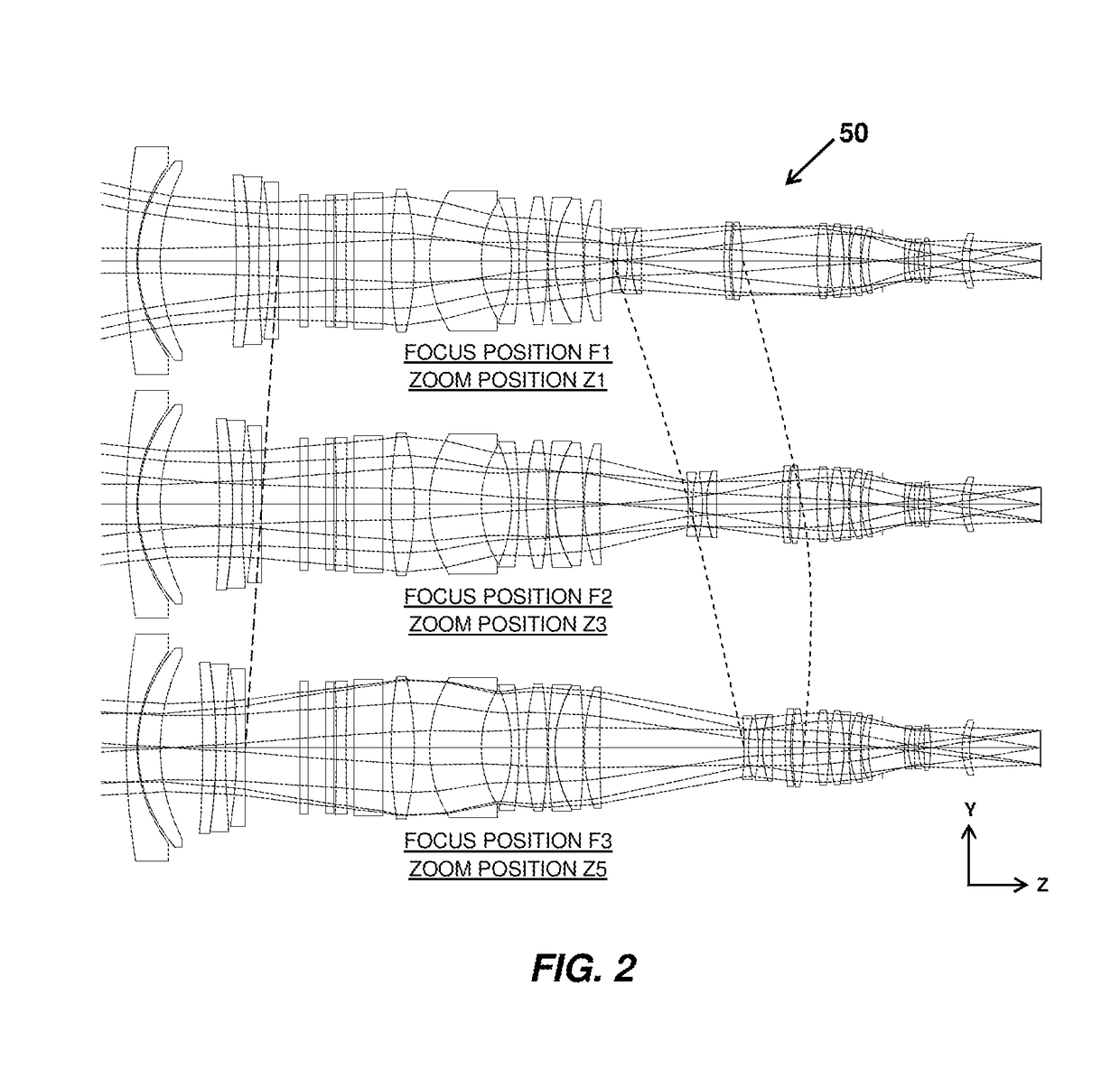Anamorphic objective zoom lens
a zoom lens and anamorphic technology, applied in the field of anamorphic objective zoom lenses, can solve the problems of large diameter, corresponding potentially higher weight and cost, and the full aperture may be relatively slow as compared, and achieve the effects of reducing the degree of aberration correction, reducing the residual lateral chromatic aberration, and reducing the degree of aberration
- Summary
- Abstract
- Description
- Claims
- Application Information
AI Technical Summary
Benefits of technology
Problems solved by technology
Method used
Image
Examples
Embodiment Construction
[0044]The invention relates to anamorphic objective zoom lenses, and in particular to a range of different focal length anamorphic objective zoom lenses covering at least a focal length range from 35 mm to 140 mm and preferably 40 mm to 125 mm in the Y direction and providing low residual chromatic aberration, a traditional oval bokeh shape and different depths of field in the vertical and horizontal azimuth directions of the field.
[0045]The term “lens group” as used in connection with the anamorphic objective zoom lens disclosed herein means one or more individual lens elements. Also, the terms “optical stop” and “stop” are equivalent terms that can be used interchangeably.
[0046]The example provided herein is a preferred embodiment of the invention in which the first (front) lens group is negatively powered, the third lens group is positively powered, the fourth lens group is variable powered and the last (rear) lens group is positively powered. Those lens groups are paired with an...
PUM
 Login to View More
Login to View More Abstract
Description
Claims
Application Information
 Login to View More
Login to View More - R&D
- Intellectual Property
- Life Sciences
- Materials
- Tech Scout
- Unparalleled Data Quality
- Higher Quality Content
- 60% Fewer Hallucinations
Browse by: Latest US Patents, China's latest patents, Technical Efficacy Thesaurus, Application Domain, Technology Topic, Popular Technical Reports.
© 2025 PatSnap. All rights reserved.Legal|Privacy policy|Modern Slavery Act Transparency Statement|Sitemap|About US| Contact US: help@patsnap.com



